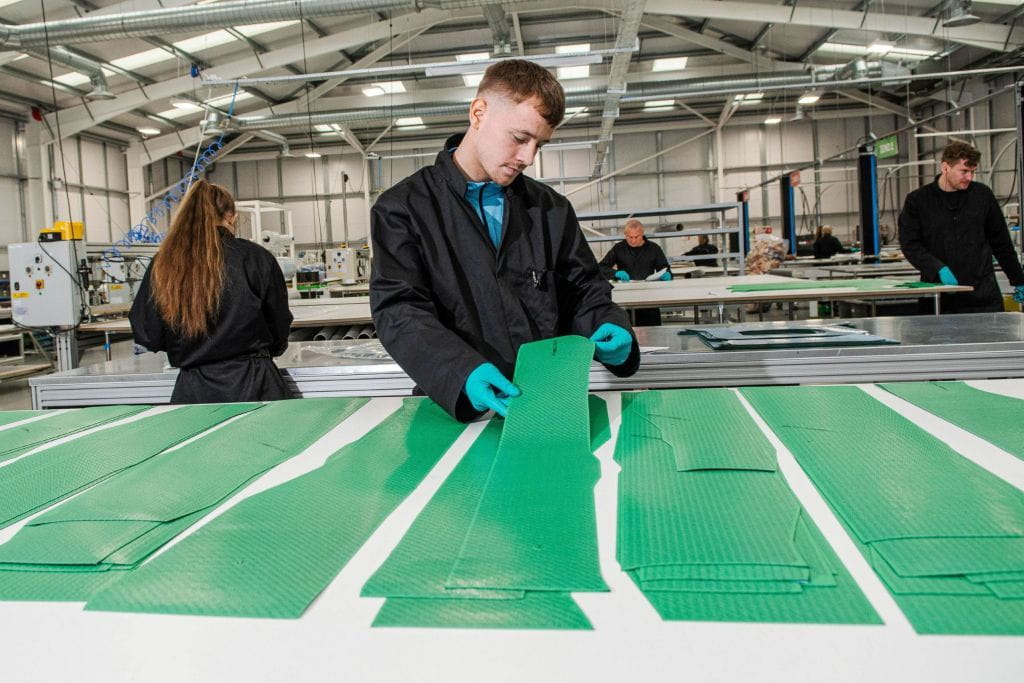Creating lighter, stronger aerospace parts demands advanced materials. Specialized manufacturers turn out these high-tech composites and alloys. Their expertise moves aviation and space technology forward through precision production capabilities. These manufacturers bridge the gap between laboratory innovations and practical applications in the aerospace industry. Their sophisticated facilities and skilled workforce enable the transformation of raw materials into flight-worthy components.
Quality Control Abilities
Strict Standards
Aerospace construction requires each component’s reliability. Tiny defects could compromise performance under extreme stresses. Following strict specifications keeps flaws from passing inspection or causing failures. Advanced non-destructive testing methods ensure material integrity while digital quality management systems track every production step for complete traceability. Maintaining tight quality control is standard for approved aerospace composites manufacturers, like Axiom Materials.
Precise Process Executions
Aircraft and spacecraft contain uniquely designed parts that need exact properties. Following detailed production plans ensures components meet engineering goals. Real-time monitoring systems track critical parameters throughout manufacturing processes. Environmental controls maintain optimal temperature, humidity, and cleanliness levels. Consistency also permits performance predictions despite combustion reactions or cosmic conditions aerospace materials will encounter.
Testing and Certification Programs
Extensively trying new recipes and methods precedes full-scale output. Companies validate quality aerospace goods by analyzing material samples from demanding lab tests. Accelerated aging chambers simulate long-term environmental exposure effects. Advanced mechanical testing equipment measures material properties under various stress conditions. Certification programs approve specific formulations, applications, and production routes as well.
Innovative Production Capabilities
Special Fabrication Techniques
Shaping hardy yet featherweight aerospace elements requires customized methods. These generate minimal imperfections while optimizing strength-to-weight ratios and resilience. Automated fiber placement machines ensure precise composite layup patterns. Advanced curing systems provide optimal conditions for material properties development. Inventive makers design molds and tools to produce parts matching blueprints precisely.
Efficient Volume Production
After perfecting parts recipes in development, efficient fabrication follows. Streamlined workflows mimic auto assembly lines for composite layers or alloy items. Robotic systems handle repetitive tasks while maintaining consistent quality and advanced planning software optimizes production scheduling and resource allocation. This moves quality components through curing, finishing, and testing at an economic pace. Such volume output abilities allow steady supplies imperative to complex programs like spacecraft construction.
Waste Reduction Processes
Leading companies now recapture and reintroduce process wastes using closed-loop approaches. Advanced material recovery systems separate and process manufacturing byproducts. Smart inventory management reduces excess material storage and expiration. These transform redundant materials into heat or feedstock for additional production cycles rather than trash. It conserves resources while shrinking energy demands.
Ongoing Advancement Efforts
Studying Innovations
Emerging techniques like automated aerospace composites printing or graphene reinforcement integration inspire manufacturers’ research. Industrial-academic partnerships accelerate the development of new manufacturing methods. Advanced modeling and simulation tools evaluate process improvements before implementation. Investigating such inventions’ feasibility expands production possibilities. Understanding coming changes also guides smart equipment investments ahead of demand.
Design Collaboration
Materials makers and product designers work together early when engineering new equipment concepts. Virtual design reviews enable real-time feedback on manufacturability issues. Rapid prototyping capabilities allow quick validation of new design concepts. This collaboration lets creators match component performance to current manufacturing realities. It also lets makers fine-tune abilities for upcoming needs aerospace designers foresee. Joint development programs accelerate the introduction of new materials and processes. Altogether, this synergy keeps propelling aviation and space technologies forward.
Conclusion
Integrating artificial intelligence and machine learning promises to further enhance manufacturing capabilities. Smart factories will automatically adjust processes based on real-time quality data. Advanced automation will enable more complex geometries and material combinations. Digital twins will simulate and optimize production processes before physical implementation. These technological advances will help manufacturers meet increasingly demanding aerospace requirements while maintaining efficiency and sustainability.

